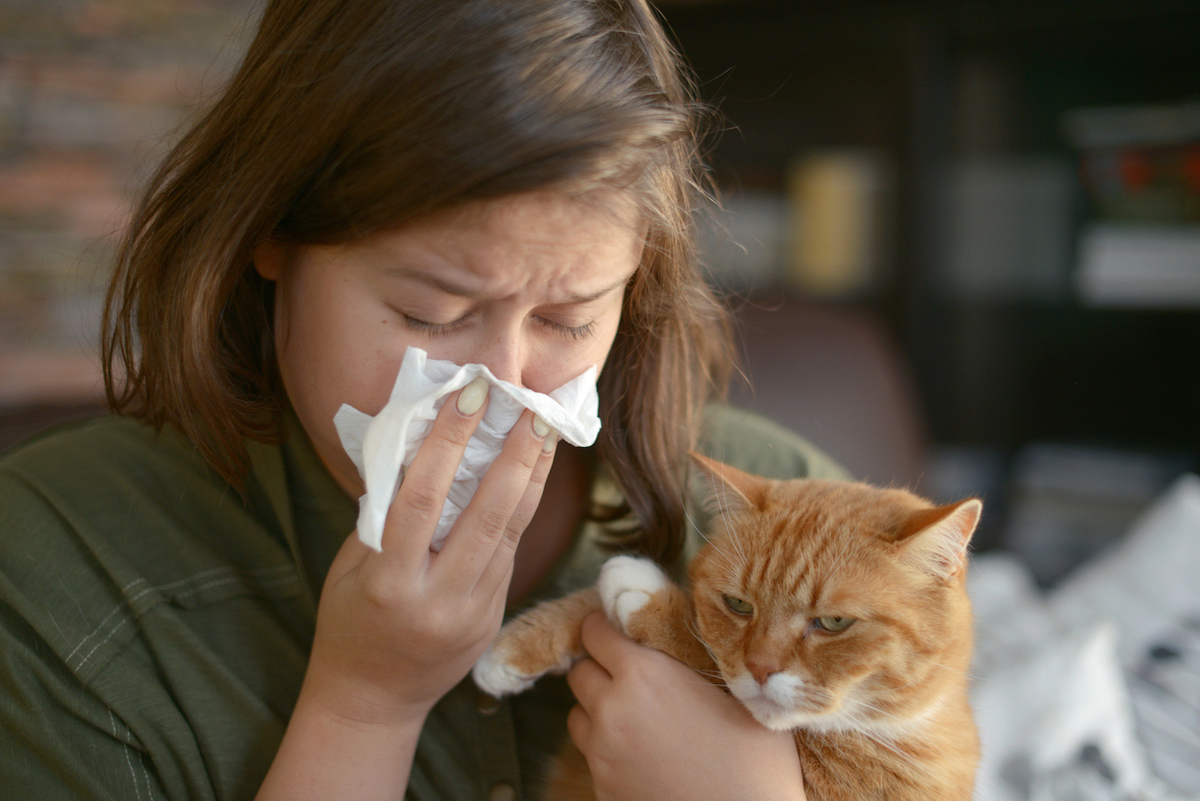We support our Publishers and Content Creators. You can view this story on their website by CLICKING HERE.

Although a rare disease, tularemia cases within feline populations are steadily on the rise. Also known as “rabbit fever,” this illness typically spreads through tick or fly bites or via contact with sick or dead infected wild animals, especially squirrels, rabbits, and rodents, per the Centers for Disease Control and Prevention (CDC). Until recently, exposure was mostly limited to animals, but with tularemia running rampant in some states, health officials are warning pet owners that the highly infectious disease can be transmitted to humans as well.
RELATED: Virus Expert Explains “Very High Likelihood” of Bird Flu Spreading to Humans.
The Minnesota Department of Health (MDH) and Minnesota Board of Animal Health (BAH) are tracking the rising development of animal tularemia cases, the health agencies announced in a joint statement.
Tularemia is a widespread disease caused by the bacterium Francisella tularensis, explains the MDH and BAH. The potentially serious illness is found in wildlife but can be passed on to domestic animals through hunting, tick or fly bites, and other forms of contact. In infected animals, tularemia may cause loss of appetite, a high fever, weakness, swollen lymph nodes, and newly formed ulcers on the skin and mouth.
Historically, tularemia is an uncommon disease in the U.S., with only about seven animal cases reported annually. However, 2023 recorded an unprecedented 21 cases, and with this year already halfway through, 2024’s tally is well on its way to exceeding the annual average. The BAH predicts the number of tularemia cases will continue to soar as more and more animals are showing clinical signs consistent with the harmful disease.
The rise in animal tularemia cases is also concerning for pet owners because health officials have confirmed that the disease is transmissible to humans.
“Pet owners need to be aware that cats, especially, can become very ill with a high fever and can quickly succumb to the disease. It’s important for pet owners to be aware of this disease in their pets because it is possible for a person to become infected as well,” says Maria Bye, a senior epidemiologist in the Zoonotic Diseases Unit at MDH.
RELATED: CDC Says “Mutant” Flu Strains Have Been Detected in U.S.—And Drugs May Not Help.
Similar to animals, humans can catch tularemia by handling infected sick or dead animals or by eating or drinking contaminated food or water, per the CDC. It’s worth noting that all types of physical contact, including well-meaning head scratches and belly rubs, can expose you to the disease. So, no matter how cute the neighborhood stray cat is, you’re better off keeping your distance.
Humans may start to experience tularemia symptoms within three to five days after initial exposure. But in some cases, symptoms like fever, skin wounds or ulcers, swollen lymph nodes, headaches, chills, nausea, and joint and muscle pain may not appear for up to two weeks.
It goes without saying that protecting your pet from tularemia is also your greatest defense against the disease. The MDH and BAH recommend keeping domestic cats indoors, administering preventative tick medication, using insect repellent to ward off ticks and flies, and avoiding contact with wild animals at all costs.
“If pets spend significant time outside or if they have had known rabbit or rodent contact and develop symptoms consistent with tularemia, MDH and BAH encourage owners to bring them into their veterinarian for evaluation,” reads the release.
Additionally, if you believe you’ve been exposed to tularemia, officials advise speaking with your healthcare provider immediately.

 Conservative
Conservative  Search
Search Trending
Trending Current News
Current News 


